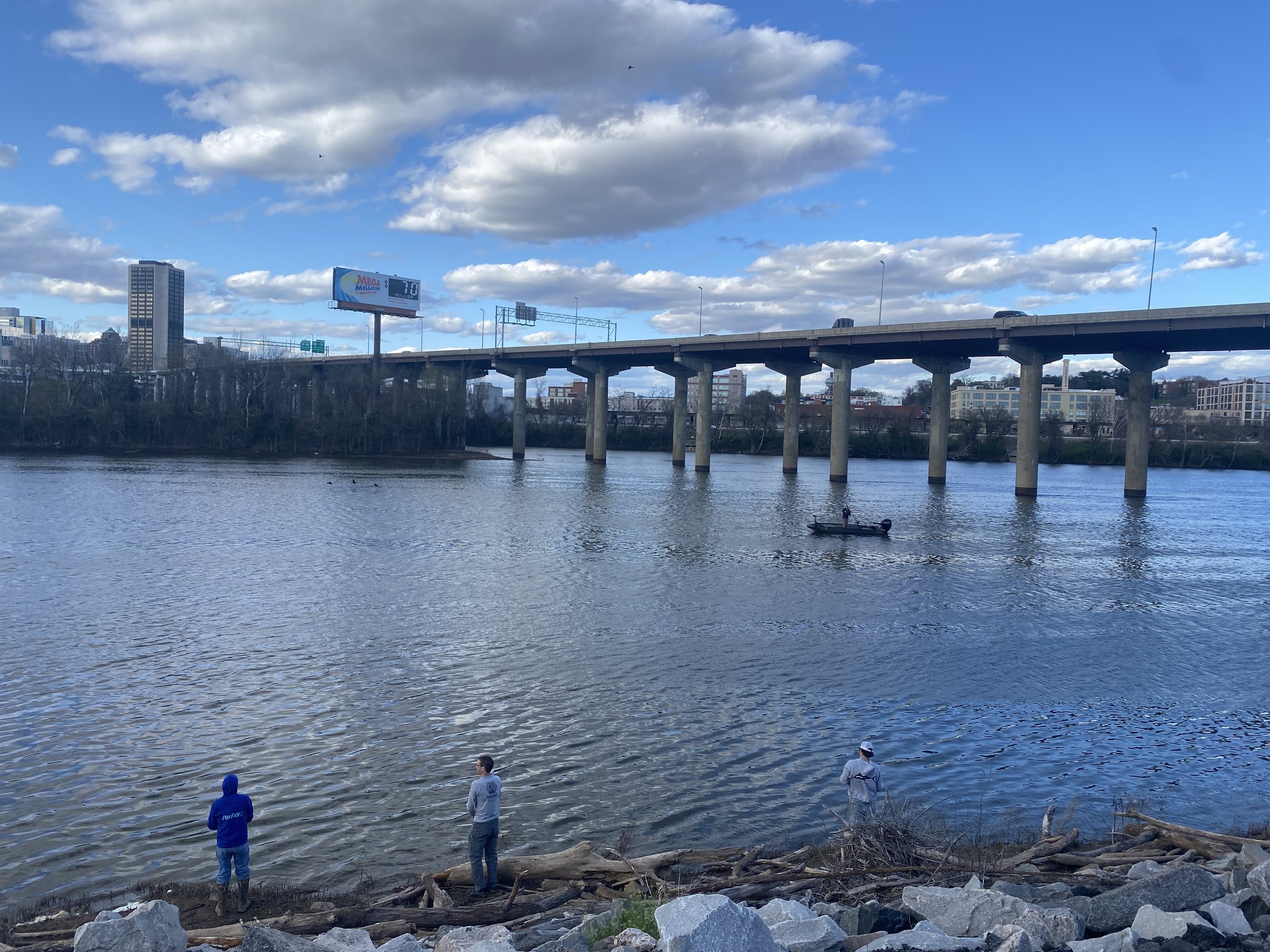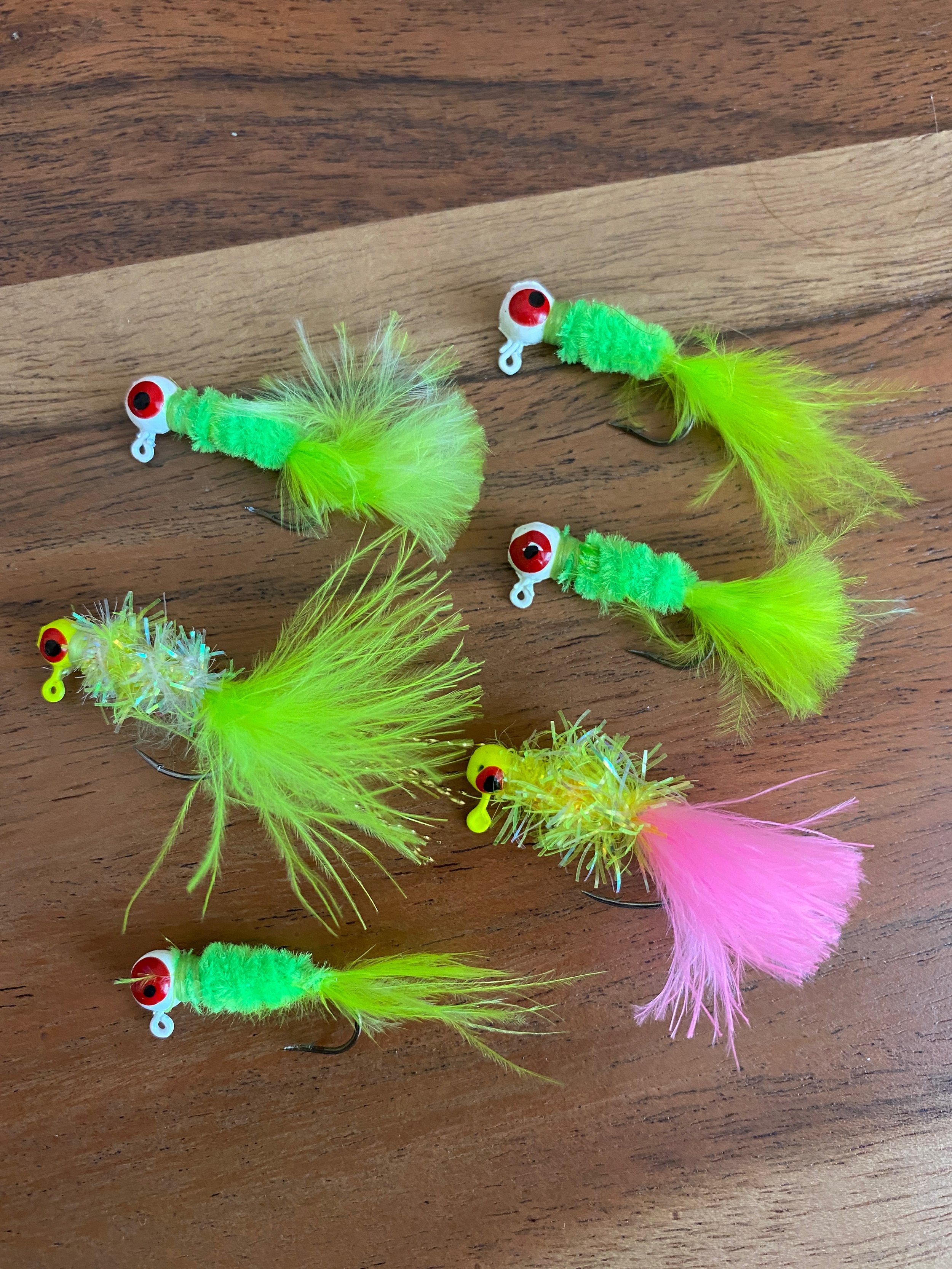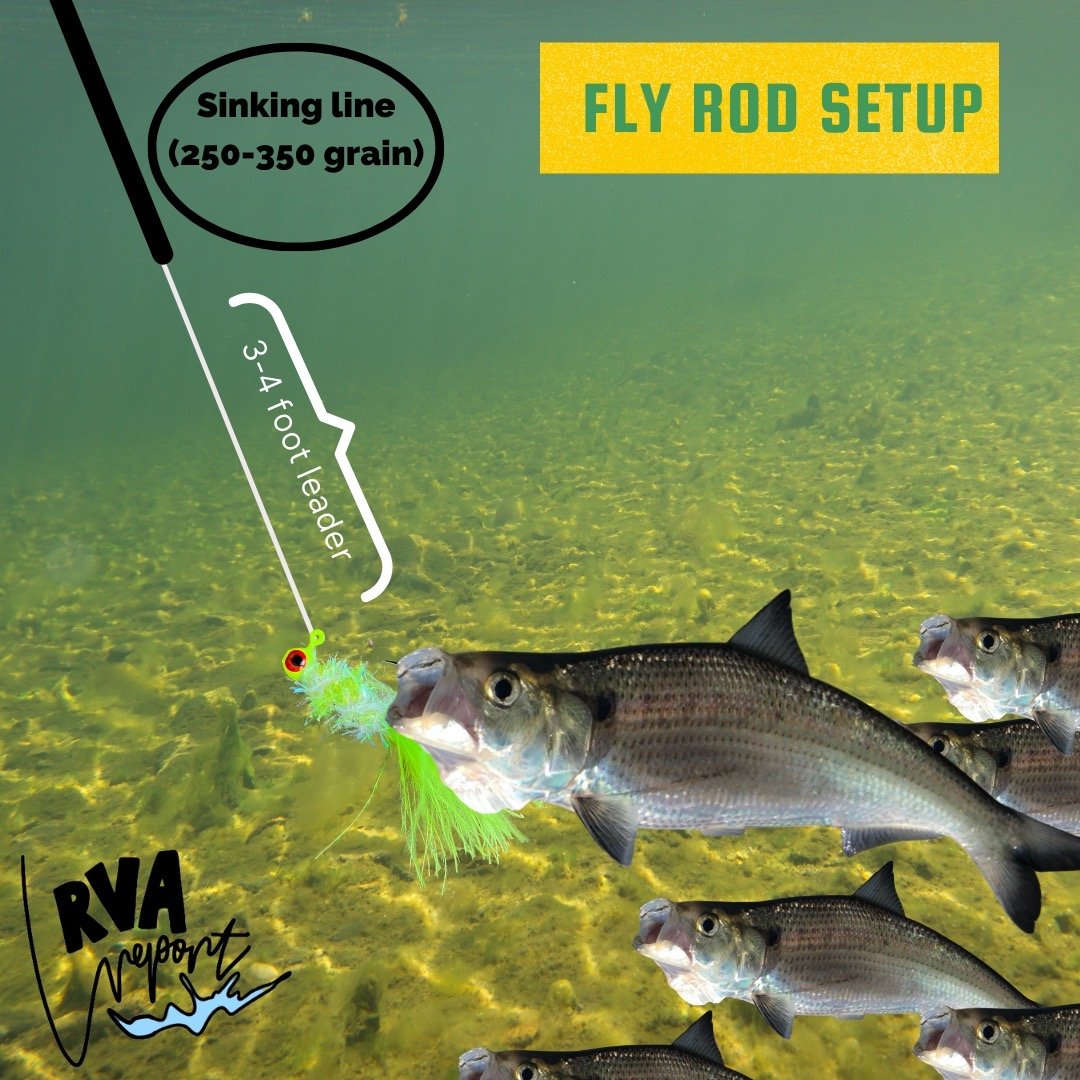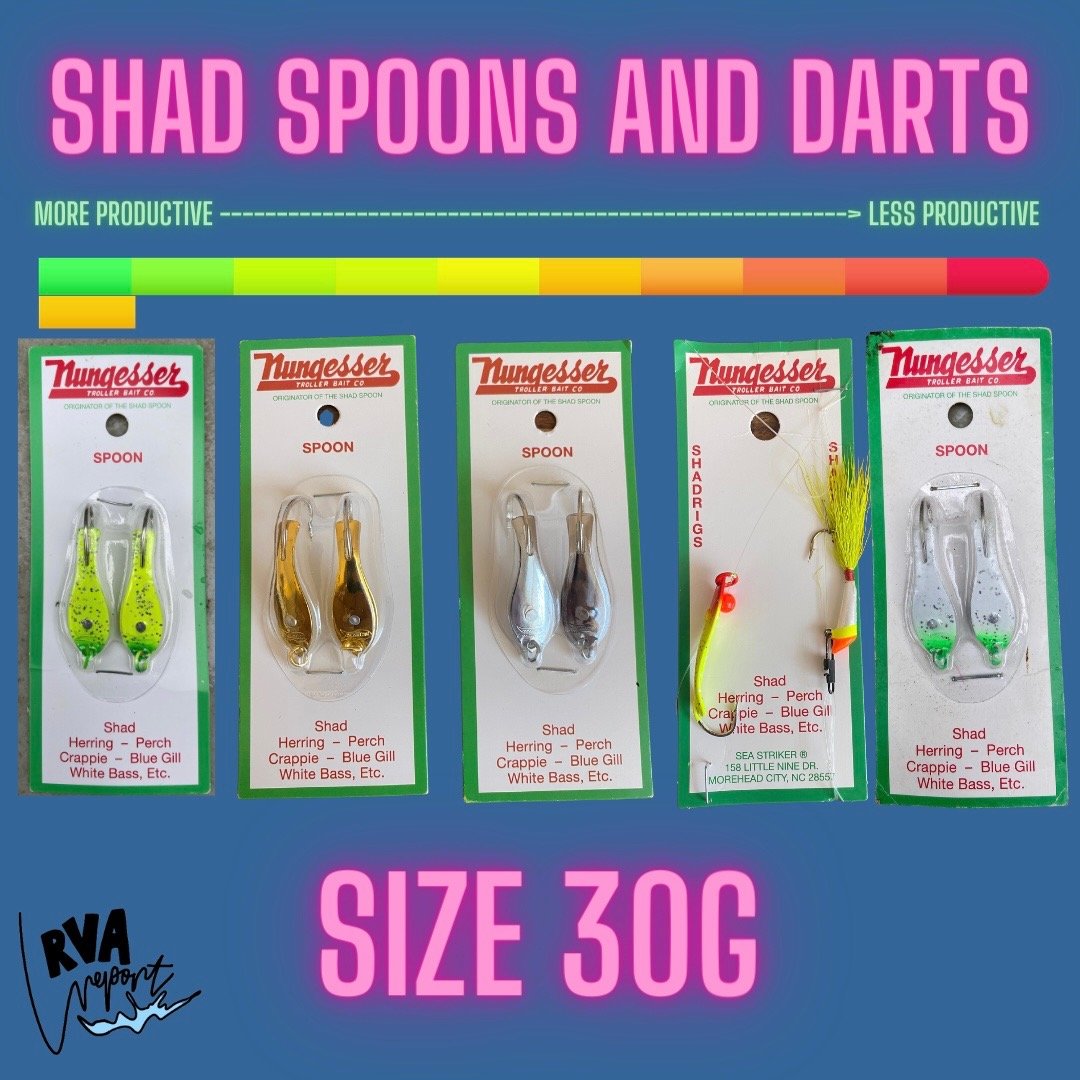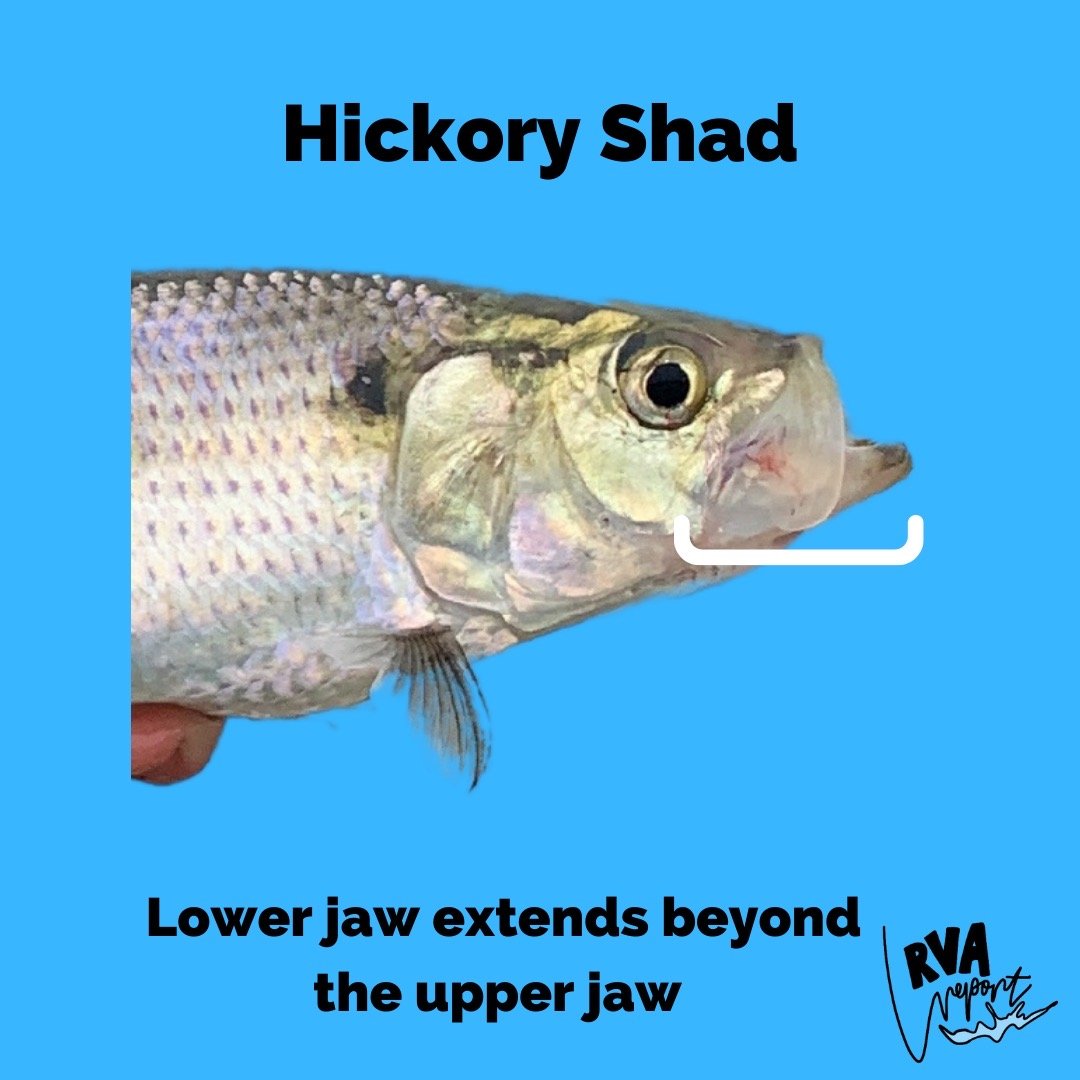Preparing for shad season
Just above the I-95 bridge on the James River
Preparing for shad season
Whether you’re behind a vise tying chartreuse shad flies or scouring Greentop’s shelves restocking your shad spoon collection, there’s a special feeling/craze/excitement that creeps into every shad angler’s mind this month, in anticipation of what’s right around the corner: SHAD SEASON! While we are still a good month away from the start of mayhem on the James River, you’ll probably see some shiny gold and silver “bling” at checkout lines this time of year as we all prepare for a nonstop frenzy of shad fishing from mid-March through the end of April.
The exact timing of the shad bite is all determined by the water temperature reaching that magic 55-degree mark. As we saw last week, with the river jumping up from the upper 30s to the mid 40s, the river temperatures can change quickly. For the shad to come in full swing, the James River needs to remain consistently in mid 50s for it to really turn on. But even when things are slow, the jolt of just a single shad nailing your fly or spoon will leave you satisfied and ready for more. To help anglers prepare this season, here are a few tips and tricks to keep in mind come March.
Rocks make fish happy and our wallets empty
We are blessed to have a long stretch of rocky shoreline between the 14th Street Bridge and the I-95 bridge that provides excellent shad spawning habitat. Deep ledges form behind large boulders providing shad with cover and protection during the spring. However, the ideal shad breeding grounds don’t always fare well for anglers jigging shad spoons and grubs off the bottom—a depth where you will find the highest level of success! Be prepared to snag your jigs on the rocks and have plenty of backup lures ready to roll. I like to bring an extra rod or two already rigged with my ¼ or ½ ounce swivel weights and a two-foot 8lb leader, so I can just tie on another spoon when the school of shad are making their way in my zone. Be patient, and remember that this section of the James River is tidal. Check the tides before you go and know that a low tide will make things much shallower. When it’s low, I increase my retrieval significantly and try to lose a bit of weight on my leader (or wait a bit less using my sinking line fly fishing). It’s hard to say how much of an impact the tides have on shad fishing success rates, so I recommend increasing your frequency of fishing compared to selectively going on an incoming tide.
Lucky lures?
I feel like every year, the debate of finding the perfect shad lure comes to light. Some argue for ultra-light tackle and mister twister plastic jigs, while other anglers are convinced that their 1oz weight, four-foot leader and massive silver spoon is the “secret recipe.” I don’t believe there’s one right answer, especially given that shad aren’t even actively feeding but simply attacking our lures in defense of their eggs, but there is one aspect of shad fishing that does matter, and it is the depth you retrieve your lure in the water column.
Bright and shiny shad flies
I think we can all remember a day when the person next to us (who was literally casting the exact same lure with the exact same weight in the exact same spot) seemed to catch a shad on every single cast, while we might have connected with only one or two. What’s hard to account for in the shoulder-to-shoulder comparison is the retrieval rate and how long the angler next to you is letting their lure sink to the bottom. If you’re having one of those unfortunate moments of low success, try changing your retrieval speed and/or letting your jig sink down a bit lower in the water after you cast it into the water.
There certainly isn’t one perfect shad spoon or fly, but some of my favorites are found below. A 30 gram, chartreuse Nungesser-branded spoon would be my pick if I was stuck with one option, and a 1/8 ounce chartreuse malibou fly would be my best bet on the fly rod. Take a look at the diagrams to better understand how to set up a spinning rod leader and fly rod combination.
A non-evidence based shad spoon color guide for someone to prove effective:
Where to go?
One of the best aspects of shad fishing is the accessibility for bank anglers. Before work. After work. Lunch break. You name it. It’s easy to slip down to the various parking areas and fish for shad in a short amount of time. I follow a pretty simple recipe as the shad begin to show up. In the early part of the season, mid-March through the start of April, I spend most of my time fishing for shad around the Ancarrow’s Boat Landing area. Typically, I park all the way to the left in the parking area and walk to the grassy patch of land that sits about 10 feet above the water. From my experience, the best action takes place all the way to the end of the bank toward the large island of rocks in the middle of the river. Shad stack up in this section because of the deep channel that goes parallel to the bank about 10 yards out from the shore.
As it gets into April, I spend most of my time fishing just above the I-95 bridge, which can be accessed by parking under a very discrete lot near the bridge. To access the river, walk under the bridge toward the Floodwall Trail. You will see plenty of people lining the rocks in April, hopefully with rods bent over!
My last go-to shad spot is just upriver from the I-95 bridge below the 14th Street bridge. Convient parking is available at Floodwall Park. After you exit the lot, follow the trail down to the river below the 14th Street bridge.
Knowing the difference between a Hickory and American shad
Here in Richmond, a majority of the shad caught each season are hickory shad, which are identified by having a more silver/grey top compared to the greener, slightly larger American. Hickory shad also tend to do the tail dance where they dash across the water after being hooked, so be on the lookout for that this season.
It’s VERY IMPORTANT to know that there is a moratorium on American shad, blueback herring, and alewife (meaning it is illegal to keep these species of river herring). Please help your fellow anglers learn how to identify shad and make sure you aren’t keeping any Americans, blueback herring or alewife (these last two species are less common to catch, more likely to accidentally hook).
For photos of the American and Hickory shad, see below:
Have fun, and let us know how you do!
The spring shad run is one of the most exciting times of the year and serves as an unofficial start of fishing on the James River. Take some time to celebrate the shad, and share the excitement with a friend or family member. Be sure
A nice Hickory shad caught by Chris Knight


